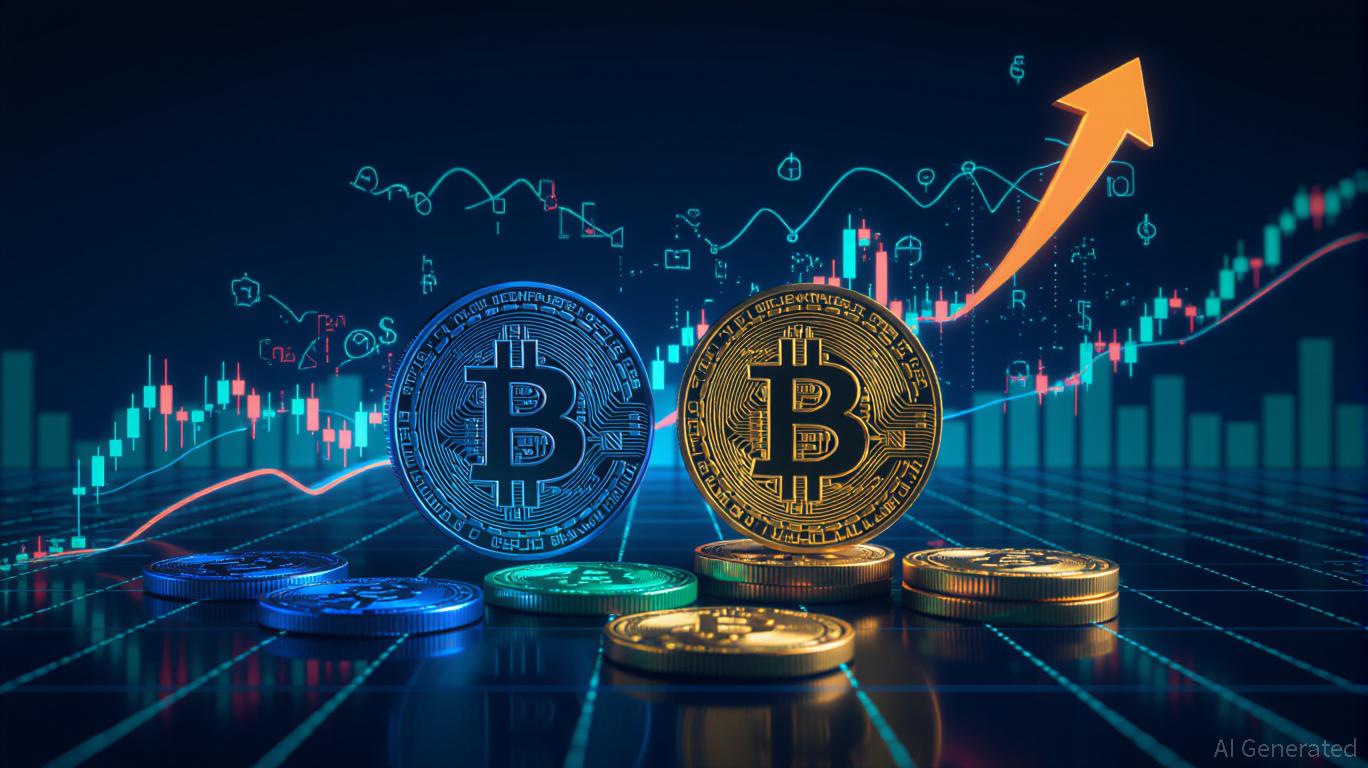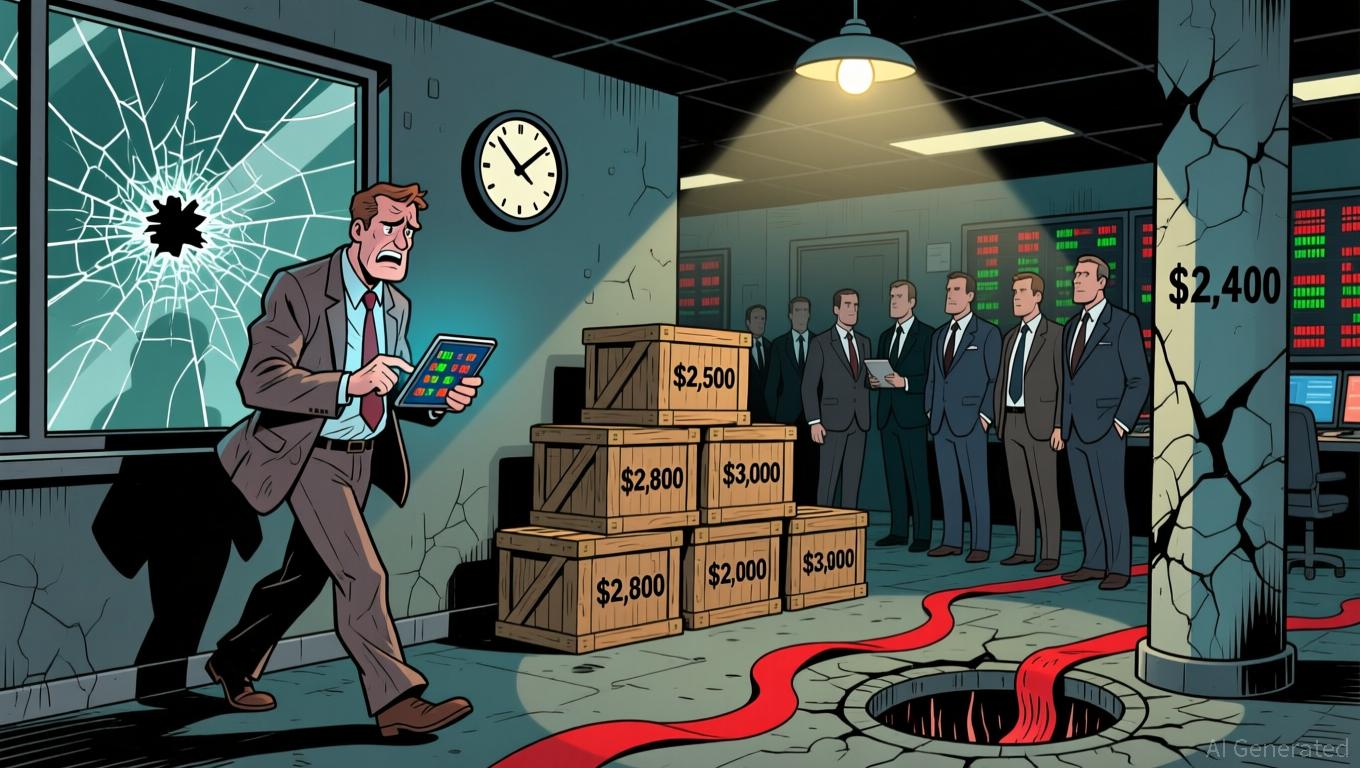The Increasing Importance of Stablecoins as Strategic Assets Amidst Crypto Market Volatility
- Institutional investors use stablecoins like USDC and BUSD to balance crypto portfolio risk and liquidity. - Allocating 5-10% to stablecoins enables yield generation via DeFi while mitigating volatility from assets like Bitcoin . - Mathematical models show stablecoins reduce portfolio beta, acting as near-risk-free assets during crypto market turbulence. - March 2023 depegging events exposed stablecoin vulnerabilities, highlighting risks tied to collateralization and issuer credibility. - As crypto marke
Stablecoins as a Portfolio Allocation Tool
Within crypto portfolios, stablecoins are increasingly regarded as equivalents to cash holdings.
In addition, stablecoins open up opportunities to earn yields through lending services and DeFi platforms. By placing USDC or BUSD into liquidity pools or staking them, investors can

Using Stablecoins to Hedge Against Volatility
The benefits of stablecoins go beyond just providing liquidity.
Take, for example, periods of extreme market stress—like the U.S. banking crisis in March 2023—when
Changing Market Trends and the Value of Diversification
As the digital asset market evolves, its behavior increasingly resembles that of traditional stock markets.
This stabilizing function is further supported by the expanding role of stablecoins in the global financial ecosystem.
Potential Risks and Key Considerations
Despite their strengths, stablecoins also come with certain risks.
Conclusion: Strategic Importance in Volatile Markets
USDC and BUSD are valuable for their ability to solve two major challenges in crypto investing: managing liquidity and controlling volatility. While not without flaws, their growing role in institutional portfolios reflects a more advanced market that requires both creativity and caution. For those navigating the uncertainties of 2025, stablecoins offer a crucial link between the high-risk world of crypto and the steadiness of traditional finance.
Disclaimer: The content of this article solely reflects the author's opinion and does not represent the platform in any capacity. This article is not intended to serve as a reference for making investment decisions.
You may also like
Ethereum Updates: Ethereum Drops to $2,800, Prompting Surge in Demand for ZKP's Hardware-Based Presale
- Ethereum's price fell below $2,800, triggering $6.5M liquidations and testing critical support levels amid declining on-chain demand metrics. - Institutional players like BitMine accumulated 3.62M ETH (~$10.4B) despite the selloff, signaling long-term bullish conviction. - ZKP's hardware-driven presale gained traction with $17M in ready-to-ship Proof Pods and Miami Dolphins partnership for privacy-focused sports analytics. - Mutuum Finance's $19M DeFi presale and ZKP's auction model with $50K wallet caps

Vitalik Buterin Supports ZKsync: What This Means for Layer 2 Scaling
- Vitalik Buterin endorsed ZKsync in late 2025, highlighting its "underrated and valuable" work alongside the Atlas upgrade achieving 15,000 TPS and $0.0001 fees. - ZKsync's zero-knowledge rollups and EVM compatibility enabled institutional adoption by Deutsche Bank , Sony , and Goldman Sachs for cross-chain and enterprise use cases. - The Fusaka upgrade aims to double throughput to 30,000 TPS by December 2025, positioning ZKsync to compete with Polygon zkEVM and StarkNet in Ethereum's Layer 2 landscape. -

The ZK Atlas Enhancement: Revolutionizing Blockchain Scalability?
- ZKsync's 2025 Atlas Upgrade achieves 15,000–43,000 TPS with sub-1-second finality, addressing Ethereum L2 scalability bottlenecks via Airbender proofs and modular OS. - DeFi protocols like Aave and Lido leverage ZKsync's $0.0001/tx costs to unify liquidity, while Deutsche Bank and Sony adopt its trustless cross-chain infrastructure for compliance and transparency. - ZK token surged 150% post-upgrade, with TVL hitting $3.3B and analysts projecting 60.7% CAGR for ZK Layer-2 solutions by 2031 amid instituti

XRP News Update: XRP ETFs Spark Optimism—Is $1,115 Within Reach?
- XRP's price surge to $2.20 is driven by ETF launches, with $422M inflows from Franklin Templeton and Grayscale. - Technical indicators suggest a potential $2.50+ rally if support at $1.84 holds, with long-term forecasts reaching $26.50 by 2030. - Institutional adoption of Ripple's ODL and Ripple USD's $1B+ market cap highlight growing utility beyond remittances. - Regulatory clarity post-SEC ruling and macroeconomic factors remain critical for XRP's $1,115 potential in ultra-bullish scenarios.
